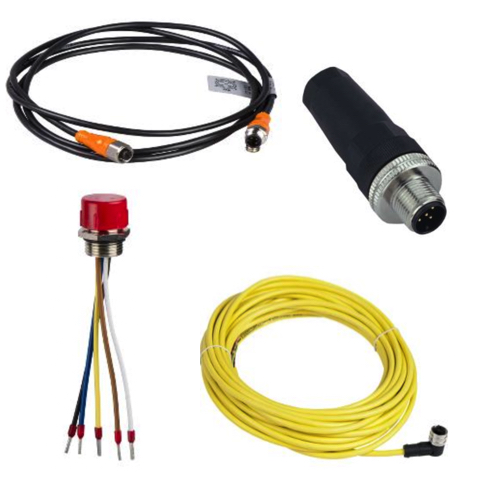Sensor Accessories

Sensor accessories are essential components that enhance the functionality and versatility of sensors in various applications. These accessories, which range from power supplies to mounting brackets, enable easy connection and installation of sensors, ensuring their optimal performance.
Power supply accessories are critical for providing consistent and reliable power to the sensors. They come in various lengths and types to cater to different needs. A well-chosen power supply can ensure a sensor operates effectively and can prevent unnecessary power-related issues.
Mounting accessories are another important set of sensor accessories. These include horizontal mounting brackets, which allow sensors to be installed in a wide range of positions, and a mounting bracket of a different diameter, available in both metric and imperial measurements, which cater to a variety of sensor sizes. The material of these accessories also varies, with options like stainless steel providing durability and protection in harsh environments.
More Information about Sensor Accessories
Retroreflective sensors often come with a range of accessories such as reflective tapes or targets, which enhance the sensor's detection capabilities. These components are especially useful in applications where direct mounting of the sensor may not be possible.
Another critical accessory is the connection kit, which usually includes a variety of plugs and cables for establishing secure connections between the sensor and the control system. These kits simplify the process of setting up and integrating the sensor into the system.
FAQs
What accessories are available for a thermocouple?
A thermocouple, an essential component in temperature sensing and control applications, can be complemented with various accessories to enhance its performance, improve installation and maintenance procedures, and increase its durability. These include: connectors, extension wires, protection tubes, mounting hardware and so on.
Can some sensor accessory products protect equipment?
Yes, some sensor accessory products, such as protective housings, mounting brackets, and surge protectors, are specifically designed to shield sensors and connected equipment from physical damage, environmental hazards, and electrical surges.
Limit Switch Basics
What are limit switches?
Limit switches are electromechanical switches that operate based on the movement or presence of an object. They are designed to detect the presence of an object using an actuator connected to a series of contacts to detect the presence and proximity or absence of a material or object. When the switch's actuator is moved by an object it will change the state of an electronic contact set. This movement signals that some preset limit has been reached. There are many different ways a switch can be actuated depending on the type of switch that is being used. Some use a roller and lever, some use a button or plunger, while others might use a rotating arm and rod attached to the main body of a switch. The type of switch that is used will largely be dictated by the specific application.
Where are limit switches used?
Limit switches can be used to tally or count items, so that when a limit is reached, the switch will open or close. This open and closing action can be counted by a controller allowing the action to be totalized. Limit switches can be used as safety interlocks to prevent machine parts from moving any further when specific point is reached. Limit switches are also commonly used in larger control systems. For example, when a certain limit is reached, the actuator can deactivate or activate a device to prevent it from malfunctioning.

